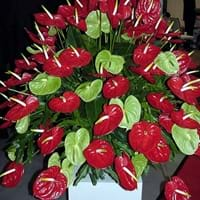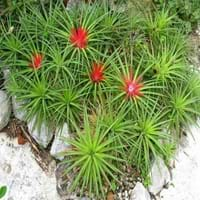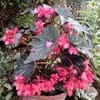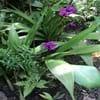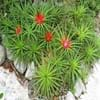Life Span
Annual and Perennial
Perennial
Type
Tender Perennial
Tender Perennial
Origin
Central America, South America
North America, Mexico, Latin America and the Caribbean, Caribbean, Central America, South America
Types
not available
Not Available
Habitat
Humid climates, Tropical Forests
Terrestrial
USDA Hardiness Zone
10-11
9-11
AHS Heat Zone
12-1
Not Available
Sunset Zone
H2
Not Available
Habit
Clump-Forming
Upright/Erect
Flower Color
Yellow, Red, Orange Red
Reddish Plum
Flower Color Modifier
Bicolor
Bicolor
Fruit Color
Not Available
Yellow
Leaf Color in Spring
Green, Light Green
Dark Green
Leaf Color in Summer
Green, Light Green
Dark Green
Leaf Color in Fall
Green, Light Green
Dark Green
Leaf Color in Winter
Green, Light Green
Light Green
Leaf Shape
Oblong
Long Barbed
Plant Season
Spring, Summer, Fall, Winter
Spring, Summer, Fall, Winter
Sunlight
Partial Sun, Partial shade
Not Available
Growth Rate
Fast
Not Available
Type of Soil
Loam
Not Available
The pH of Soil
Neutral
Not Available
Soil Drainage
Well drained
Not Available
Bloom Time
Indeterminate
Not Available
Repeat Bloomer
Yes
Not Available
Tolerances
Drought
Drought
Where to Plant?
Container, Ground, Pot
Ground
How to Plant?
Seedlings, Vegetative
Leaf Cutting, Seedlings
Plant Maintenance
Medium
Low
Watering Requirements
Keep ground moist, Keep the Soil well drained, Requires regular watering
Over-watering can cause leaf problems or root diseases, Water in morning to avoid prompting diseases
In Summer
Lots of watering
Lots of watering
In Spring
Moderate
Moderate
In Winter
Average Water
Average Water
Soil pH
Neutral
Not Available
Soil Type
Loam
Clay, Loam, Sand
Soil Drainage Capacity
Well drained
Not Available
Sun Exposure
Partial Sun, Partial shade
Not Available
Pruning
Remove damaged leaves, Remove dead branches, Remove dead leaves
Remove damaged leaves, Remove dead branches, Remove dead leaves
Fertilizers
All-Purpose Liquid Fertilizer
fertilize in growing season
Pests and Diseases
Mealy bugs, Mites, Nematodes, Scale
Fungal Diseases
Plant Tolerance
Drought
Drought
Flower Petal Number
Single
Not Available
Fragrant Flower
No
Not Available
Fragrant Fruit
No
Not Available
Fragrant Leaf
No
Not Available
Fragrant Bark/Stem
No
Not Available
Showy Foliage
Yes
Not Available
Showy Bark
No
Not Available
Foliage Texture
Coarse
Not Available
Foliage Sheen
Glossy
Not Available
Self-Sowing
Yes
Not Available
Attracts
Flies, Flying insects, Insects, Not Available
Birds, Insects
Allergy
Toxic
Not Available
Aesthetic Uses
along a porch, deck or patio, Borders, Decorating walls, Hanging Basket, Used for decorating walls, fences, gates, hedges, etc.
Borders, Ground Cover
Beauty Benefits
Not Available
Not Available
Edible Uses
Sometimes
Yes
Environmental Uses
Air purification
Air purification
Medicinal Uses
Boils, Rheumatism
Cough
Part of Plant Used
Flowers, Shoots
Fruits, Leaves
Other Uses
Used as Ornamental plant, Used for its medicinal properties, Used for Landscaping
Fibre
Used As Indoor Plant
Sometimes
No
Used As Outdoor Plant
Yes
Yes
Garden Design
Bedding Plant, Container, Cutflower, Foundation, Houseplant, Tropical
Hedges
Botanical Name
ANTHURIUM andraeanum
BROMELIA
Common Name
Flamingo Lily, Oil Cloth Flower, Oilcloth Flower, Tail Flower, Tailflower
Heart-of-Flame
In Hindi
tail flower
Heart-of-flame
In German
Schwanz Blume
Herz -of -Flame
In French
Anthurium andraeanum
Coeur-de- flamme
In Spanish
tail flower
Corazón de la llama
In Greek
Tail flower
Καρδιά - of- Φλόγα
In Portuguese
Tailflower
Coração -de- Chama
In Polish
Anturium Andrego
Heart- of- Płomień
In Latin
Tail flower
Cor - de - flamma
Phylum
Tracheophyta
Tracheophyta
Class
Liliopsida
Liliopsida
Family
Araceae
Bromeliaceae
Genus
Anthocercis
Bromelia
Clade
Angiosperms, Asterids, Eudicots
Angiosperms, Commelinids, Monocots
Tribe
Anthurieae
Not Available
Subfamily
Not Available, Pothoideae
Bromelioideae
Properties of Tail Flower and Heart of Flame
Wondering what are the properties of Tail Flower and Heart of Flame? We provide you with everything About Tail Flower and Heart of Flame. Tail Flower doesn't have thorns and Heart of Flame doesn't have thorns. Also Tail Flower does not have fragrant flowers. Tail Flower has allergic reactions like Toxic and Heart of Flame has allergic reactions like Toxic. Compare all the properties and characteristics of these two plants. Find out which of these plant can be used as indoor plant. If you are interested to decorate your house and garden, find out aesthetic uses, compare them and select the plant which will beautify your surrounding. Along with beautification, try comparing medicinal and edible uses of Tail Flower and Heart of Flame and you can choose the plant having best and most benefits.
Season and Care of Tail Flower and Heart of Flame
Season and care of Tail Flower and Heart of Flame is important to know. While considering everything about Tail Flower and Heart of Flame Care, growing season is an essential factor. Tail Flower season is Spring, Summer, Fall and Winter and Heart of Flame season is Spring, Summer, Fall and Winter. The type of soil for Tail Flower is Loam and for Heart of Flame is Not Available while the PH of soil for Tail Flower is Neutral and for Heart of Flame is Not Available.
Tail Flower and Heart of Flame Physical Information
Tail Flower and Heart of Flame physical information is very important for comparison. Tail Flower height is 30.00 cm and width 30.00 cm whereas Heart of Flame height is 150.00 cm and width 180.00 cm. The color specification of Tail Flower and Heart of Flame are as follows:
Tail Flower flower color: Yellow, Red and Orange Red
Tail Flower leaf color: Green and Light Green
Heart of Flame flower color: Reddish Plum
- Heart of Flame leaf color: Dark Green
Care of Tail Flower and Heart of Flame
Care of Tail Flower and Heart of Flame include pruning, fertilizers, watering etc. Tail Flower pruning is done Remove damaged leaves, Remove dead branches and Remove dead leaves and Heart of Flame pruning is done Remove damaged leaves, Remove dead branches and Remove dead leaves. In summer Tail Flower needs Lots of watering and in winter, it needs Average Water. Whereas, in summer Heart of Flame needs Lots of watering and in winter, it needs Average Water.
